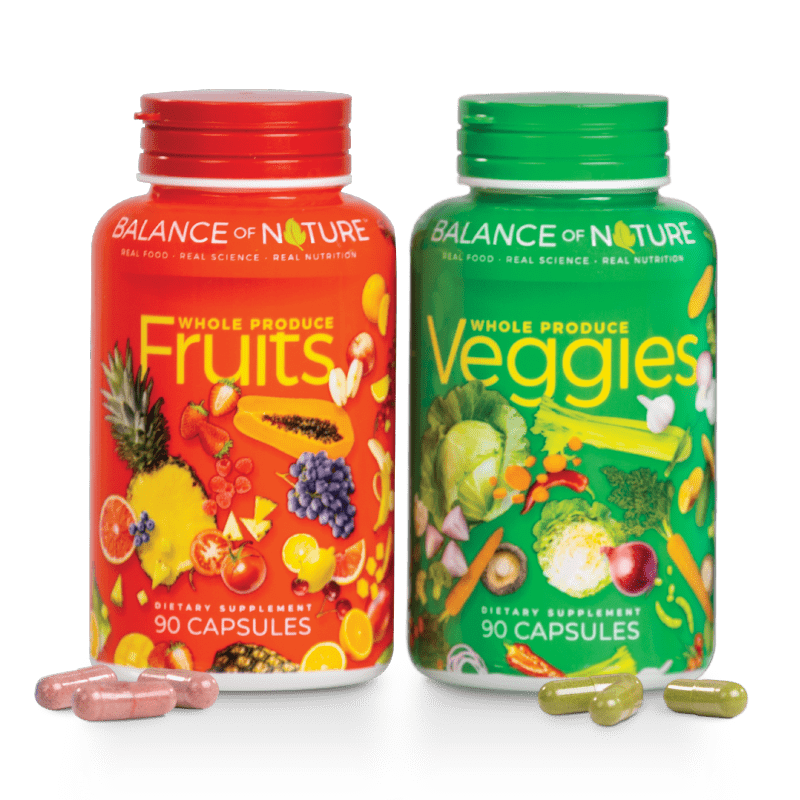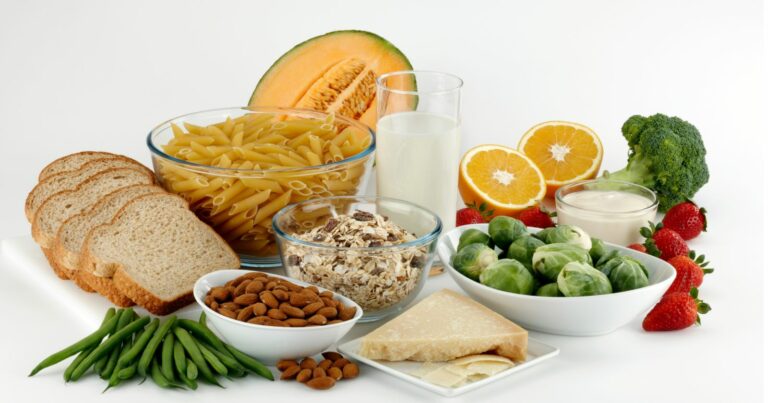Diabetes Is Still The #8 killer.
Control Diabetes With Fruits And Veggies? Can you imagine eating 17 fruits and veggies every day, I don’t think so. Wait a minute there is a way to have these fruits and veggies every day in 6 capsules. The Product is Balance of Nature’s Veggies and Fruit Supplements.
When you consider how fruits and vegetables lose their nutrient value, by heating, letting them stay past their prime, or simply pumped up by some store.
Most people know what to do, but few people do what they know. This is where coaching from Balance of Nature surpasses its competitors. Their coaches will hold you accountable. Helping you be successful,
The 17 Fruits And Veggies That Can Control Your Diabetes
Below my research shows how each fruit and veggie helps control diabetes. There are also a few stops to examine the Balance Of Nature product.
1. Zucchini Can Reduce Blood Sugar Levels
Zucchini May Reduce Blood Sugar Levels. Zucchini may help lower blood sugar levels in people with type 2 diabetes. At 3 grams of carbs per cooked cup (232 grams), zucchini provides a great low-carb alternative to pasta for those looking to reduce carb intake.
It can be spiralized or sliced to replace spaghetti, linguini, or lasagna noodles in dishes. Low-carb diets can significantly lower blood sugar and insulin levels, both of which may keep blood sugar levels stable and reduce the need for medication in people with type 2 diabetes.
What’s more, zucchini’s fiber helps stabilize blood sugar, preventing levels from spiking after meals. Diets rich in fiber from fruits and vegetables — including zucchini — are consistently linked to a lower risk of type 2 diabetes. The fiber found in zucchini may also help increase insulin sensitivity, which can help stabilize blood sugar as well.
Additionally, animal studies note that zucchini peel extract may help reduce blood sugar and insulin levels. This may be due to the skin’s potent antioxidants. However, human research is needed before strong conclusions can be made.
SUMMARY: Zucchini’s fiber may increase insulin sensitivity and stabilize blood sugar levels, potentially reducing your risk of type 2 diabetes.
2. Tomatoes Can Help Control Diabetes
Tomatoes may control Diabetes. A study published in the Journal of the American Medical Association indicates that daily consumption of tomatoes can help reduce the oxidative stress of type-2 diabetes. Moreover, lycopene intake may increase the plasma rate of this compound. However, there are more studies required to establish an association between lycopene intake and the risk of developing diabetes.
3. Cauliflower Is A low-Carb Alternative Helping Diabetes
Low-Carb Alternative to Grains and Legumes Cauliflower is incredibly versatile and can be used to replace grains and legumes in your diet. Not only is this a fantastic way to increase your veggie intake, but it is also especially helpful for those who follow low-carb diets.
This is because cauliflower is significantly lower in carbs than grains and legumes. For example, a cup of cauliflower contains 5 grams of carbs. At the same time, a cup of rice contains 45 grams of carbs — nine times the amount of cauliflower.
Here are some examples of recipes that can be made with cauliflower instead of grains and legumes: Cauliflower rice: Replace white or brown rice with cauliflower that has been grated and then cooked, as in this recipe. Cauliflower pizza crust: By pulsing cauliflower in a food processor and then making it into a dough, such as in this recipe, you can make a delicious pizza.
Cauliflower hummus: Chickpeas can be replaced with cauliflower in hummus recipes like this one. Cauliflower mash: Instead of making mashed potatoes, try this recipe for a low-carb cauliflower mash that is easy to make.
Cauliflower tortillas: Combine pulsed cauliflower with eggs to make low-carb tortillas that can be used for wraps, taco shells, or burritos, as in this recipe. Cauliflower mac and cheese: Cooked cauliflower can be combined with milk, cheese, and spices to make mac and cheese, like in this recipe.
4. Onions Help Control Blood Sugar
Help Control Blood Sugar Eating onions may help control blood sugar, which is especially significant for people with diabetes or prediabetes. A study of 42 people with type 2 diabetes demonstrated that eating 3.5 ounces (100 grams) of fresh red onion reduced fasting blood sugar levels by about 40 mg/dl after four hours. Additionally, multiple animal studies have shown that onion consumption may benefit blood sugar control.
A study showed that diabetic rats fed food containing 5% onion extract for 28 days experienced decreased fasting blood sugar and had substantially lower body fat than the control group. Specific compounds found in onions, such as quercetin and sulfur compounds, possess antidiabetic effects. For example, quercetin has been shown to interact with cells in the small intestine, pancreas, skeletal muscle, fat tissue, and liver to control whole-body blood sugar regulation.
SUMMARY: Due to the many beneficial compounds found in onions, consuming them may help reduce high blood sugar.
5. Broccoli Supports Blood Sugar Control
Antioxidants and Fiber May Aid Blood Sugar Control Eating broccoli may support better blood sugar control in people with diabetes. Although the exact mechanism is unknown, it may be related to broccoli’s antioxidant content. One human study showed significantly decreased insulin resistance in people with type 2 diabetes who consumed broccoli sprouts daily for one month.
Interestingly, an animal study revealed decreased blood sugar in addition to reduced pancreatic cell damage in diabetic rats fed broccoli extract ). Broccoli is also a good source of fiber. Some research indicates that a higher intake of dietary fiber is associated with lower blood sugar and improved diabetic control.
SUMMARY: Eating broccoli may lower blood sugar and improve diabetic control. This is likely related to its antioxidant and fiber content.
6. Grapes May Help Control Diabetes
May protect against diabetes and lower blood sugar levels Grapes contain 23 grams of sugar per cup (151 grams), which may make you wonder if they’re a good choice for people with diabetes. If you take a look at their glycemic index (GI) rating — a measure of how quickly a food raises your blood sugar — you’ll see that it ranges from 49–59, depending on the grape variety. Similarly, the definition of low GI is variable depending on the source — some people consider it under 55 as low, while others consider it under 50 as low.
This means that grapes’ GI score may range from low to medium, in which case they may raise your blood sugar levels at a slow or moderate pace but won’t necessarily spike it. However, keep in mind that eating too much low GI food will have the same effect on blood sugars as eating high GI food. So, it’s best to eat grapes in moderation. In addition, compounds found in grapes may help improve markers of insulin response.
In a review of 29 studies in 1,297 adults, grapes and grape supplements significantly decreased what’s called homeostatic model assessment of insulin resistance (HOMA-IR), a measure of insulin resistance. In particular, the compound resveratrol may improve your body’s ability to use insulin by decreasing insulin resistance increasing insulin sensitivity protecting your pancreas’s beta cells, which produce insulin improving insulin production increasing the number of glucose receptors on cell membranes Managing your blood sugar levels over time is important for reducing your diabetes risk and preventing diabetes-related complications.
SUMMARY: Though grapes are high in sugar, their low to moderate GI makes them fairly safe to eat in moderation if you have diabetes. Additionally, compounds in grapes may protect against high blood sugar.
7. Sweet Potatoes Help Control Type 2 Diabetes
They Help You Manage Type 2 Diabetes According to the Centers for Disease Control (CDC), more than 100 million Americans currently suffer from diabetes or prediabetes. This is when your body becomes resistant to the effects of insulin. It can also occur when your body doesn’t produce enough of the substance. Insulin is a hormone that governs how your body metabolizes glucose, a form of sugar it uses as fuel.
Symptoms of Type 2 diabetes include frequent urination: When your body stops using sugar correctly, it tries to expel the excess through urine. Increased thirst: When you go to the restroom frequently, you grow thirsty as your body tries to replace lost fluids. Hunger: Because your body needs to metabolize sugar properly for fuel — but can’t — you feel famished. You don’t often lack calories, but rather nutrients. However, overeating leads to weight gain.
Fatigue: Because your body isn’t getting much fuel, even when you eat a lot, you feel tired. Blurry vision: Diabetes hurts your eyes and can lead to blindness when left untreated. Infections: Your body has fewer nutrients available to fight germs, meaning you get sick more often. Women with Type 2 diabetes often experience frequent yeast infections.
Slow-healing sores: Similar to infections, your body lacks the nutrients it needs to speed healing. Despite their name, sweet potatoes won’t cause your blood sugar to rise dramatically when eaten in moderation.
Purple sweet potatoes may prove especially beneficial. They contain anthocyanins, substances that reverse Type 2 diabetes and obesity by changing the way your gut absorbs carbohydrates.
Balance of Nature
100% Natural Fruits & Veggies
- Gives You More Energy
- Relieve Sick Symptoms
- Great supplement for picky eaters (kids)
- Health Coaching To Get Consistent Results
If you click this link and make a purchase, we earn a commission at no additional cost to you.

8. Apples A Healthy Snack for Diabetics
Apples are a healthy snack for diabetics. Apples are considered one of the healthiest snacks you should indulge in. It is safe for people suffering from Type-2 diabetes, and they can eat it every day without any worry in the world. According to a recent study, munching an apple for breakfast reduces the chance of Type-2 diabetes by 29%.
This mouthwatering fruit can also stop certain enzymes from turning into starch instead they transform into a simple sugar that your body requires to produce energy. Moreover, apples are a great way to control insulin as the components found in them are known to release sugar into the bloodstream steadily. The decent quantity of soluble fibers in the fruit also controls blood sugar levels in diabetic patients.
9. Strawberries Can Help Control Diabetes
May Aid in Managing Diabetes Eating strawberries may lower the risk of developing type 2 diabetes as strawberries have a low glycemic index, which a study published in the British Medical Journal confirmed. Another study funded by The Canadian Institutes of Health Research showed that eating strawberries improved glycemic control among people with diabetes. Another research shows that it can help in managing hyperglycemia-linked type 2 diabetes.
10. Grapefruit May Help Prevent Insulin Resistance and Diabetes
Grapefruit May Help Prevent Insulin Resistance and Diabetes Eating grapefruit regularly may have the potential to prevent insulin resistance, which can lead to diabetes. Insulin resistance occurs when your cells stop responding to insulin. Insulin is a hormone that regulates many processes in your body.
For example, it’s involved in many aspects of your metabolism, but it’s most commonly known for its role in blood sugar control. Insulin resistance ultimately leads to higher insulin and blood sugar levels, two primary risk factors for type 2 diabetes.
Eating grapefruit may help control insulin levels and thus have the ability to reduce your likelihood of becoming insulin resistant.
In one study, subjects who ate half of a fresh grapefruit before meals experienced a significant reduction in both insulin levels and insulin resistance, compared to the group that didn’t eat grapefruit. Furthermore, eating fruit as a whole is generally associated with better blood sugar control and a reduced risk of type 2 diabetes.
SUMMARY: Grapefruit may help reduce insulin resistance, which can lower your risk of developing type 2 diabetes.
11. Carrots Lower Risk of Developing Diabetes
Carrots Lower Risk of Developing Diabetes Scientists at many renowned research facilities have found astonishing results regarding the effect of carrots on blood sugar levels and future risk of diabetes. Their findings showed that people who had higher chances of developing Type-2 diabetes can reduce their risk by regularly consuming foods that contain beta-carotene. This establishes carrots’ position as a diabetic-friendly and preventative food.
12. Diabetes Can Be Treated With Aloe Vera.
Treats Diabetes: Diabetes also called sugar disease can be treated and balanced with the regular usage of Aloe Vera. On a regular basis, 5 gm pulp of Indian aloe can be given. It is not applicable for those who generally suffer from cold, chilliness, and disorders related to that. Aloe Vera is good for diabetes patients because it helps to regulate blood sugar levels when consumed regularly.
Balance of Nature
100% Natural Fruits & Veggies
- Gives You More Energy
- Relieve Sick Symptoms
- Great supplement for picky eaters (kids)
- Health Coaching To Get Consistent Results
If you click this link and make a purchase, we earn a commission at no additional cost to you.

13. Soybeans Help Control Diabetes
Soybeans help prevent diabetes. Diabetes is another leading killer that must be prevented at the earliest. According to a study published in “Journal of Medical Food” the pinitol present in soybeans helps in the reduction of postprandial blood glucose in the Type II affected patients.
Another study confirms the efficiency of fermented soybean products in combating Type II diabetes. Therefore, soybean is good for diabetic patients but you must always try to avoid the sweetened soy items and instead go for the unsweetened non-fried soy items.
14. Blueberries Can Improve Insulin Sensitivity
Diabetes management Blueberries can improve insulin sensitivity, which lowers the risk of type 2 diabetes, heart disease, and stroke. Research suggests that anthocyanins in blueberries can help lower blood sugar levels as well.
15. Raspberries Are A Natural Source Of Sugar
Raspberries are a natural source of sugar Raspberries contain natural sugars which means they won’t cause blood sugar spikes as processed sugars do. This makes raspberries a great choice for people with diabetes or watching their weight.
16. Mushrooms Can Help Control Diabetes
Mushrooms Can Prevent Diabetes More than 84-million Americans live with the blood disorder prediabetes. A further 29-million Americans have an advanced form of the disorder, type-2 diabetes. This blood sugar disorder arises from the repetitive consumption of sugar and refined carbohydrates The pancreas is the organ responsible for regulating blood sugar levels. When the organ senses an elevation in blood sugar, it secretes a hormone called insulin into the bloodstream.
Insulin lowers blood sugar back to baseline levels. Consistent consumption of sugary foods damages the pancreas and its ability to secrete insulin efficiently. Diabetic individuals must supplement with exogenous insulin after meals containing carbohydrates. An insulin injection ensures they don’t turn hypoglycemic and slip into a coma. Eating mushrooms provide an ideal form of nutrition for diabetics. They are rich in vitamins and minerals and low in carbohydrates. Mushrooms also contain bioactive compounds and enzymes that assist the body in regulating hormone and insulin production and increase insulin sensitivity.
17. Bananas May Improve Insulin Sensitivity
May improve insulin sensitivity when unripe Insulin resistance is a significant risk factor for several chronic diseases, including type 2 diabetes. Several studies reveal that regularly eating resistant starch — for example, enjoying unripe bananas — may improve insulin sensitivity. This could make your body more responsive to this blood-sugar-regulating hormone. However, more research investigating how the resistant starch in bananas might affect insulin sensitivity is needed.
Conclusions
- 17 Fruits and Veggies to help control diabetes in 6 capsules.
- The key here is commitment. Like many natural remedies, it takes a while for the benefits to kick in because you have to let the vitamins and minerals build up in your body.
- You can choose which ones you naturally want to add to your diet.
- You can use the Balance of Nature supplement veggies and fruit when you need to supplement.
- Balance of nature helps you with a coach to assure consistent results.
Learn More About The Incredible Importance Of Coaching

Balance of Nahttps://elderlyindependence.com/balance-of-nature-review/ture
Gives You More Energy
Relieve Sick Symptoms
Health Coaching To Get Consistent Results






